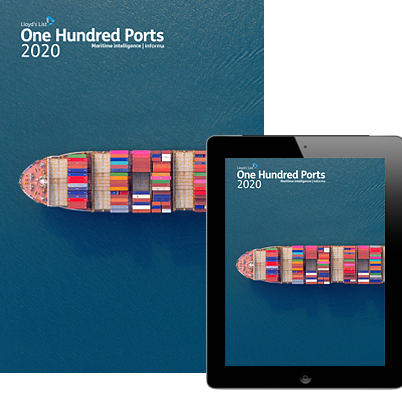
Welcome to the 2020 edition of Lloyd’s List One Hundred Ports, tallying up the annual container throughput figures of the world’s elite port facilities.
Given how this year has unfolded at the hands of the coronavirus health crisis, 2019 can be marked as the calm before the storm.
Top 100 volume growth softened on the previous year, a trend in line with the projections for more moderate growth from here on in as the container port sector gains maturity.
Teu totals grew by 2.5% in 2019 year on year, against the 4.8% growth figure recorded in 2018 — and the 6% growth posted in 2017.
Container throughput growth was typically fragmented last year. With an increase of less than 3%, volumes in China were largely subdued, as the tit-for-tat trade war with fellow economic powerhouse the US took its toll.
This accelerated the ongoing shift of traffic to other production centres in Asia.
However, China’s dominant position in the port sector shows little sign of fading. Containerised trade moved through China represented nearly 40% of the overall teu total.
Strong performances were recorded in both the Middle East and the Mediterranean, where average growth among the region’s ports grew by 6.3% and 6.6%, respectively.
Volume growth in Northern Europe, North America and Central and South America was slim, at best.
However, there was the usual spread of winners and losers in 2019, as some ports continued to prosper at the expense of others, whether through carrier alliance wins or the opening of new facilities to absorb traffic from elsewhere.
We also lost four ports from the rankings this year, while welcoming the return of Dammam, plus three newcomers: the Chinese debutant Jinzhou, Turkey’s Izmit and the Vietnamese port of Hai Phong.

A simpler time
Linton Nightingale
Despite the geopolitical uncertainties, coupled with the risks aligned with trade regionalisation and trade wars, 2019 proved a period of relative tranquillity compared to the upheaval ahead

Carriers ride out calm before the storm
James Baker
Box lines suffered under the trade war, leading to low demand during 2019. While they were braced for the shock of higher fuel prices, nothing could have prepared them for what lay ahead

Coronavirus curveball
Linton Nightingale
The impact of the coronavirus pandemic has thrown the ultimate curveball when assessing the fortunes of the container port sector
You must sign in to use this functionality
Authentication.SignIn.HeadSignInHeader
Email Article
All set! This article has been sent to my@email.address.
All fields are required. For multiple recipients, separate email addresses with a semicolon.
Please Note: Only individuals with an active subscription will be able to access the full article. All other readers will be directed to the abstract and would need to subscribe.











































































































